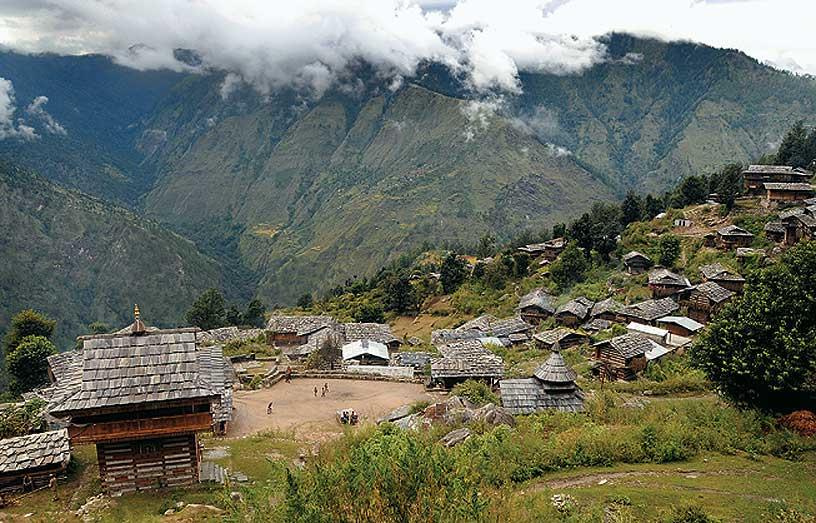
DAY 1: We walked past well-kept mountain villages and small fields. We requested a villager to give us chillies from her fields; without a moment's hesitation, the family plucked enough to last us the trek, refusing to accept any money in return. By late afternoon we reached Bitri (2,500m), the last village on the trail. The village temple with its exquisite architecture dominated the landscape. We camped a kilometre further in a large meadow which doubles up as a children's playground
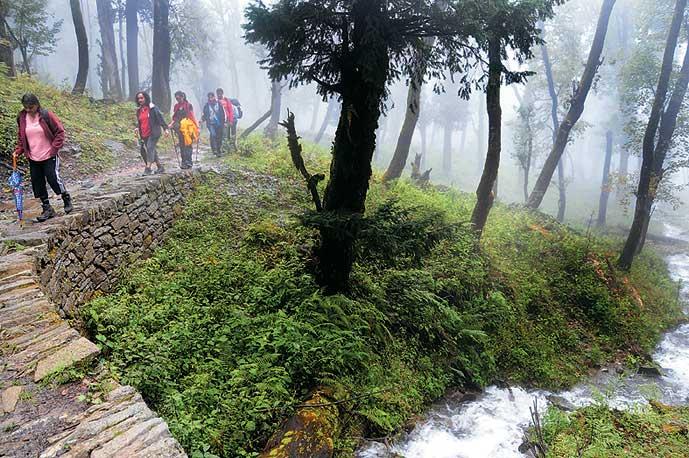
DAY 2: Through day two, the trail moved through fairly dense forest sections as we gradually gained height. We could see the Rupin river on its meandering course, winding on the valley floor far below, flowing to the west as we continued to head north. We came across small meadows and streams, which were great spots to take a break by. The continuous rain had washed the area into a bright green landscape. This was the longest stage on our trek, and it was with great relief that, late into the evening with the setting sun as a backdrop, we saw our tents in the distance
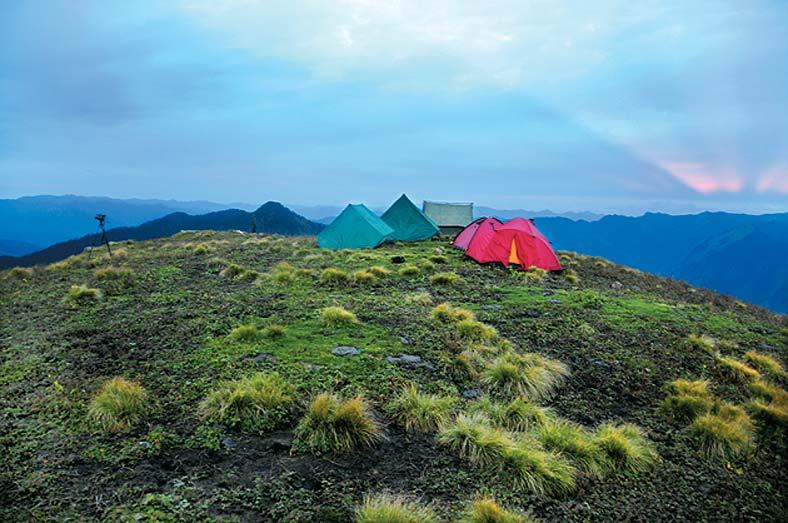
Our day two camp was at Masundha Dhar (3,600m), which is a high point on the ridge dividing the Rupin and Supin valleys. This was an exposed campsite with breathtaking views in all directions. Towards the north, clearly in view, was the Baraadsar Ridge; across the Rupin, we could see the west peaks of Himachal. Towards the east, we caught glimpses of a cluster of peaks across the Har-ki-dun valley of which Kalanag (6,387m) seemed the most prominent
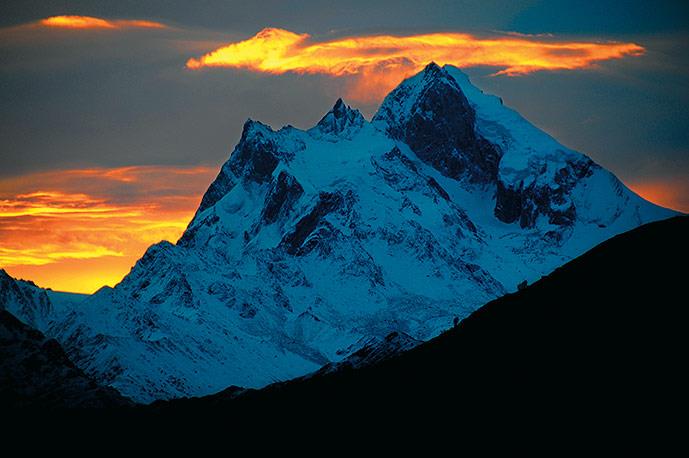
DAY 3: Early morning views from Masundha Dhar were special. Towards the east, the first rays started to hit the peaks. The refracted beams did something special to the Swargarohini (6,247m) - turning the air around the summit a bright orange and imbuing it with a halo. This is a mountain massif with four separate peaks. It is a dramatic mountain: its north face drops 2,000m in less than 2km and its south face is only marginally less steep - making it a challenging climb. Thanks to our excellent location, we were able to see all the four peaks of the mountain clearly
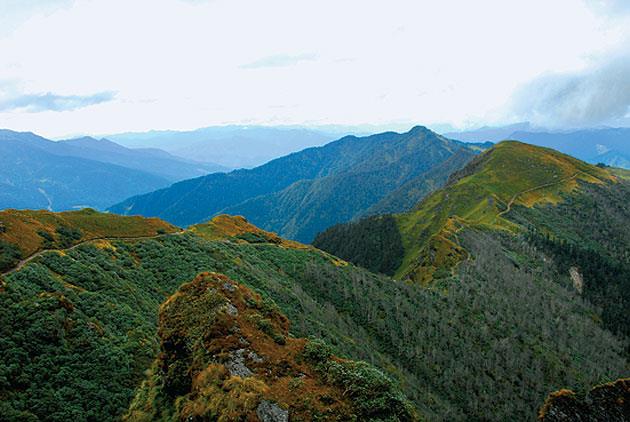
At 3,500m, we were above the tree line and vegetation had thinned out considerably. The hard work on day two meant that we had achieved most of the height gain required, and we now moved on flat sections along the Rupin-Supin ridge. At the head of the Supin Valley we could see views of the large meadow, Vishkhopdi, 'vish' being poison and 'khopdi' meaning brain. According to legend, those who visit the meadow in summer become intoxicated from the scent of the flowers there
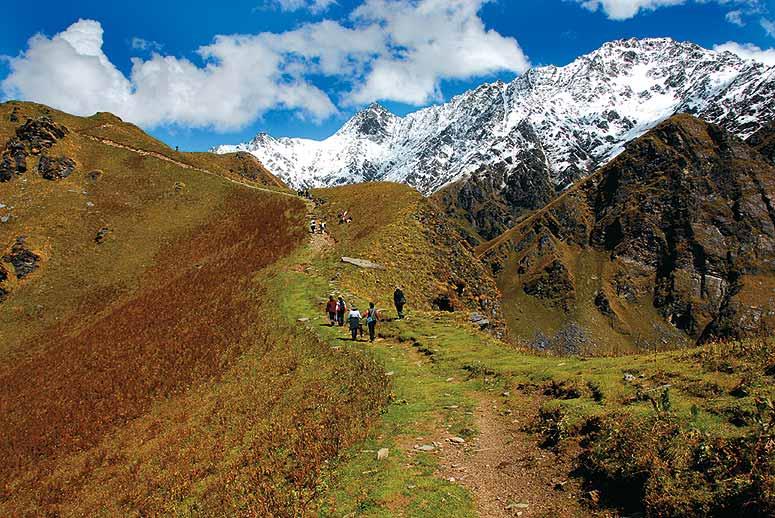
DAY 4: Day four was one of the highlights of the trek. We walked along grassy slopes through the day, with the recurring feeling that we were in paradise. As we moved closer to the Baraadsar Ridge, we noticed there had been a liberal spray of snow: the next day's climb seemed daunting. By early afternoon, we reached the base of the Baraadsar Ridge from where the final climb to the lake starts. We were at Camp Dev Bhasa (3,640m), which we nicknamed 'the saddle' due to its U-shaped appearance.
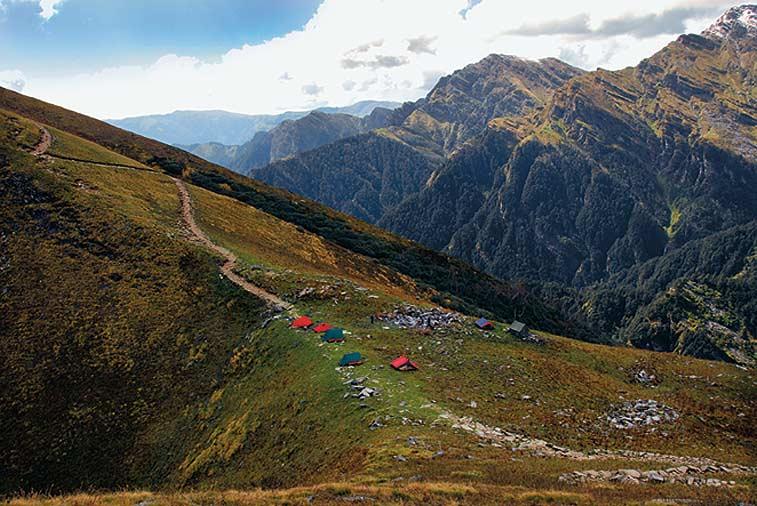
In the afternoon, we found ourselves in the middle of a massive hailstorm. By late evening it had abated and it seemed that peace would prevail on 'the saddle'. We were quite wrong. Around 9pm, just as we had settled into our tents, looking forward for some much needed rest, gale winds started, threatening to blow our tents and us down into the valley below. Further reinforcements in the form of heavy stones were required to keep our tents and blood pressure down. Finally, towards the middle of the night, it all went quiet and we were able to get some sleep
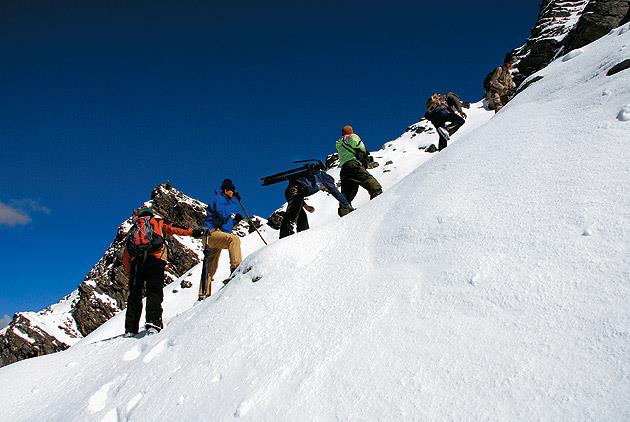
DAY 5: Starting early at 6am the next morning, we made good progress for it was fine weather. By 8am we were at 4,000m, where the snowline began. Around 9am the sun started to hit the slopes, turning the snow into slush, slowing us down considerably. The only benefit in moving in knee-deep snow was that, on the steeper sections, we were comfortable, not needing to be roped up. By 10.30am, we reached the top of the ridge at 4,400m and got our first peek at what lay beyond
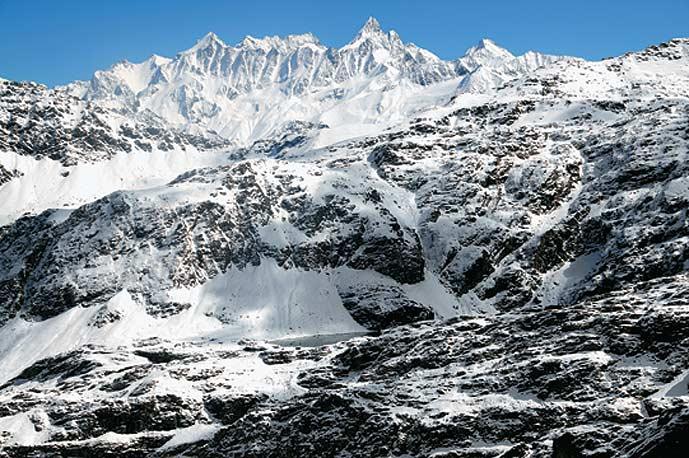
The sight in front of us was stunning. We were looking into a massive bowl-shaped expanse that resembled a cauldron. There were high ridges in all directions, and in the middle, lower down in the basin, the Baraadsar Lake. In the background beyond the ridges, mountain peaks, magnificently spread out as far as eye could see. The minute they caught sight of the lake, our team of local porters started to pray and lit agarbatis in offering. Their faith in the lake was strong; it was their unshakeable belief that no prayer goes unanswered here
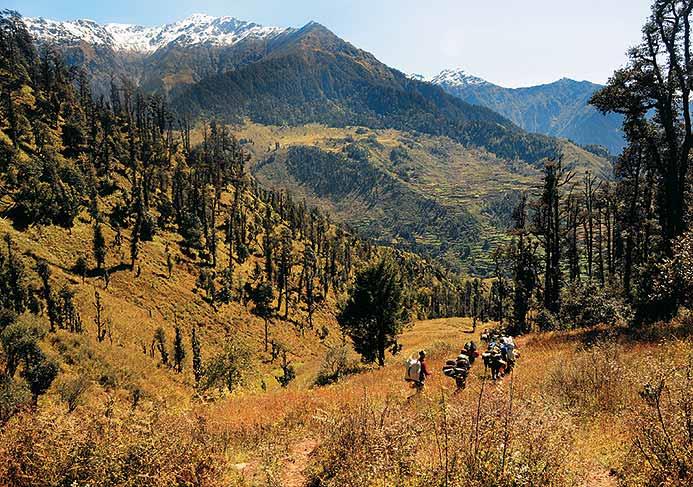
DAY 6: On our journey down through the Supin Valley, I reflected on the local belief surrounding Baraadsar lake. I remembered the man we had met at the start of our trek who had requested us to pray for the rain to let up. We were in the region for three more days as we made our way back down, and there was not a drop of rain. Apart from being overwhelmingly beautiful, perhaps there is something sacred about the waters of Baraadsar... Perhaps our trek had indeed been devinely blessed
Rupin and Supin valley
Uttarakhand

